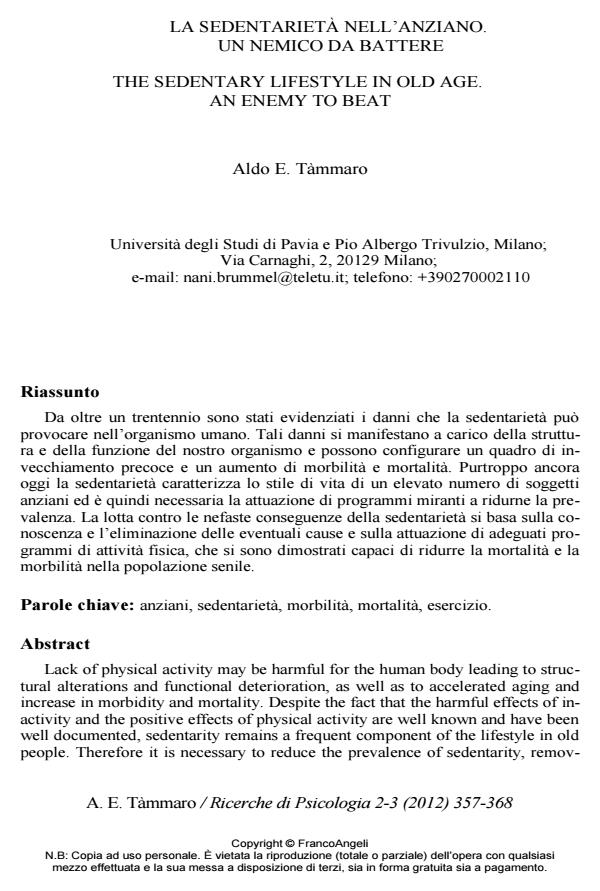The sedentary lifestyle in old age. An enemy to beat
Journal title RICERCHE DI PSICOLOGIA
Author/s Aldo E. Tàmmaro
Publishing Year 2013 Issue 2012/2-3
Language Italian Pages 12 P. 357-368 File size 192 KB
DOI 10.3280/RIP2012-002014
DOI is like a bar code for intellectual property: to have more infomation
click here
Below, you can see the article first page
If you want to buy this article in PDF format, you can do it, following the instructions to buy download credits

FrancoAngeli is member of Publishers International Linking Association, Inc (PILA), a not-for-profit association which run the CrossRef service enabling links to and from online scholarly content.
Lack of physical activity may be harmful for the human body leading to structural alterations and functional deterioration, as well as to accelerated aging and increase in morbidity and mortality. Despite the fact that the harmful effects of inactivity and the positive effects of physical activity are well known and have been well documented, sedentarity remains a frequent component of the lifestyle in old people. Therefore it is necessary to reduce the prevalence of sedentarity, remov- ing its causes if present and implementing programs of physical activity, which has proven capable of reducing the risk of mortality and favourably influencing the course of many chronic disease.
Keywords: Elderly, sedentarity, morbility, mortality, exercise
Aldo E. Tàmmaro, La sedentarietà nell’anziano. Un nemico da battere in "RICERCHE DI PSICOLOGIA " 2-3/2012, pp 357-368, DOI: 10.3280/RIP2012-002014